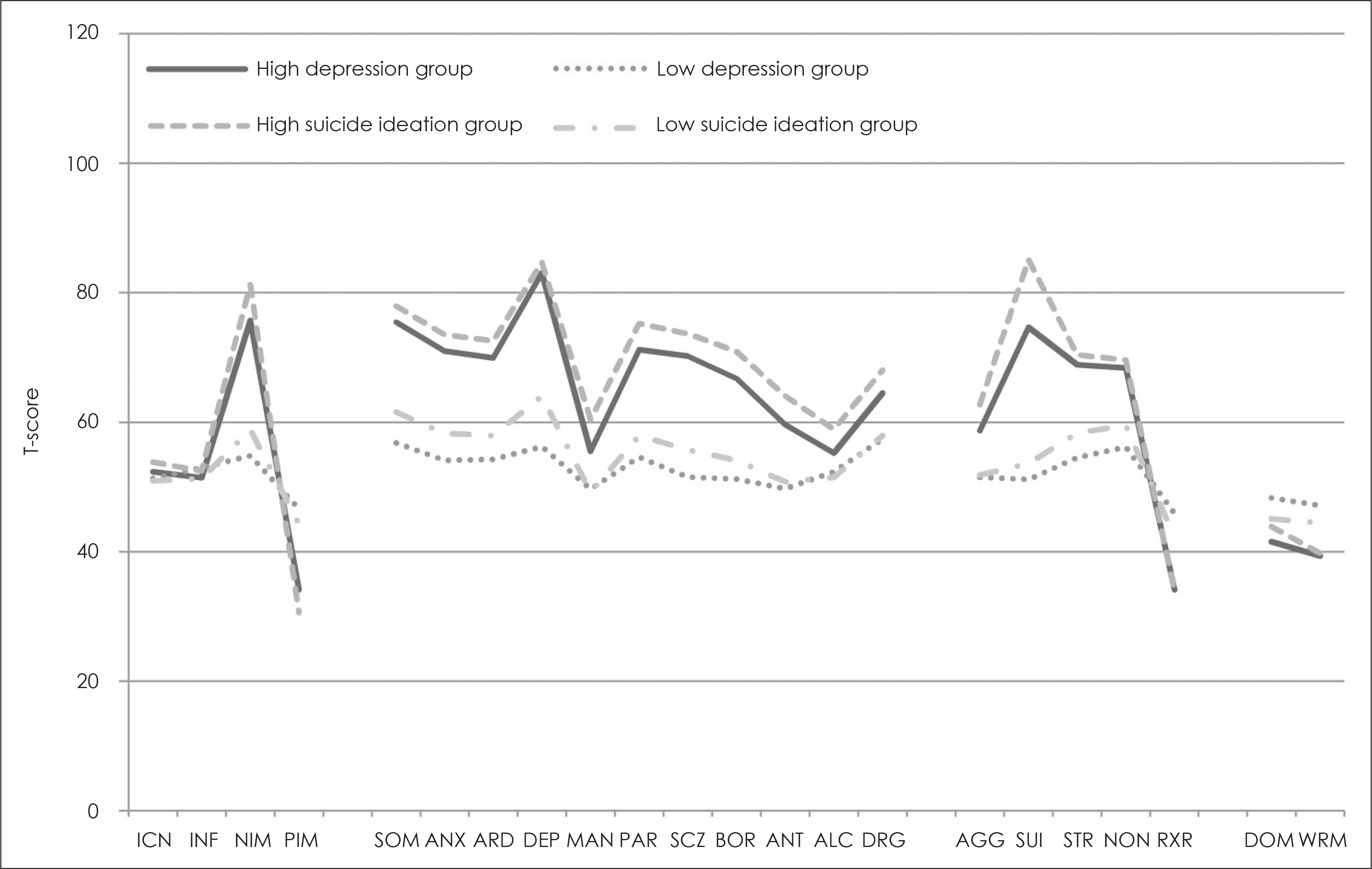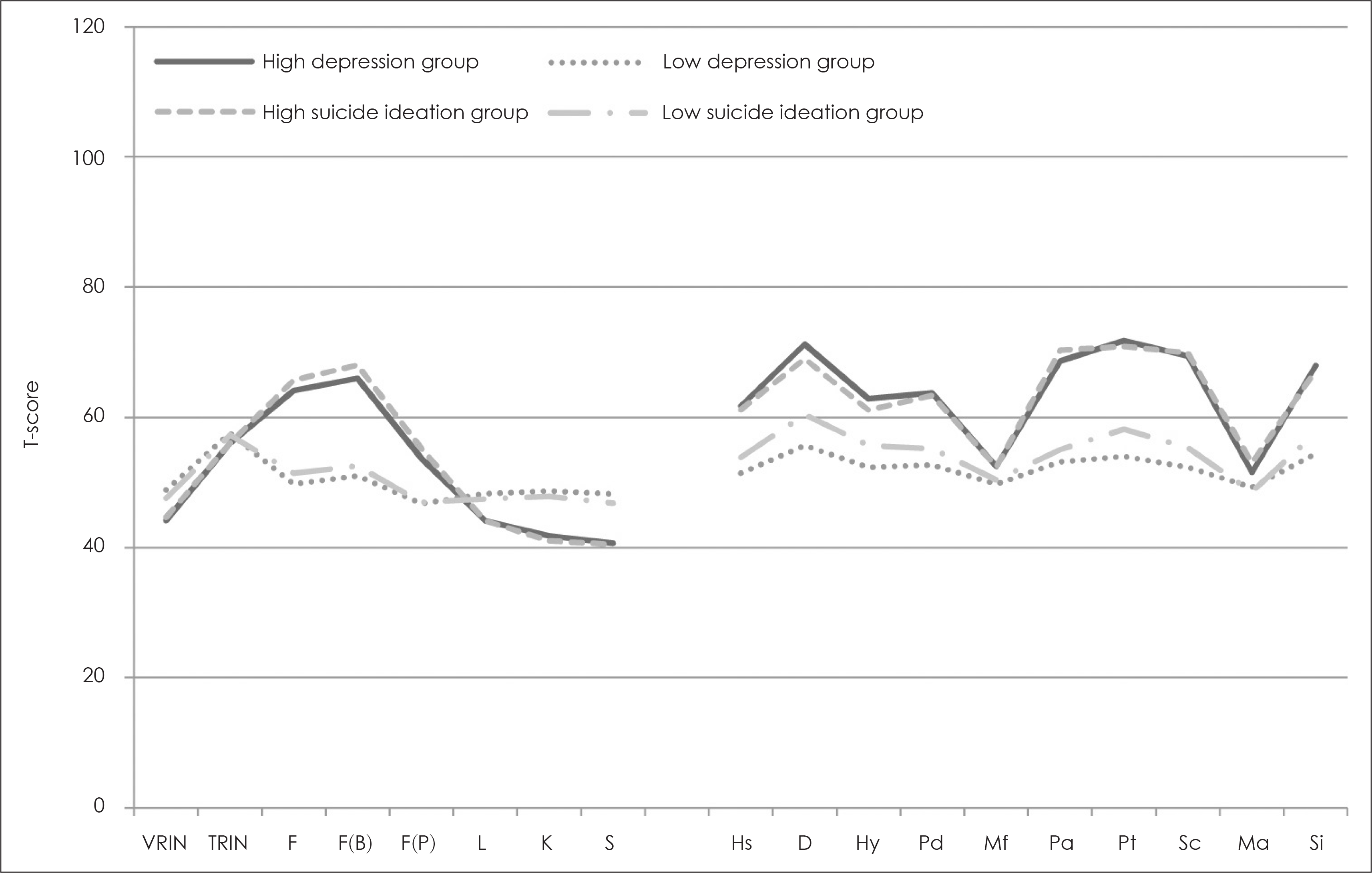1). Hawton K, van Heeringen K. The international handbook of suicide and attempted suicide. Chichester: John Wiley & Sons, LTD;2000.
2). Stewart D, Ross J, Watson C, James K, Bowers L. Patient characteristics and behaviours associated with self-harm and attempted suicide in acute psychiatric wards. J Clin Nurs. 2012; 21:1004–1013.

3). Kahng SK. Does depression predict suicide?: gender and age difference in the relationship between depression and suicidal attitudes. Korean J Soc welf Stud. 2010; 41:67–100.
4). Han KS, Park YH, Im HS, Ju GY, Bae MH, Kang HC. Hope, depression and suicidal ideation in chronic mental illness patients. J Korean Acad Psychiatr Ment Health Nurs. 2010; 19:205–211.

5). Choi JW. Study of suicide death rate for suicide attempters, psychiatry emergency room visitors and psychiatry inpatients [dissertation]. Seoul: Ulsan University;2010.
6). Nock MK, Borges G, Bromet EJ, Cha CB, Kessler RC, Lee S. Suicide and suicidal behavior. Epidemiol Rev. 2008; 30:133–154.

7). Jae YM. Suicide and psychiatric disorder. J Korean Soc Biol Ther Psychiatry. 2004; 10:3–10.
8). Harwood D, Jacoby R. Suicidal behaviour among the elderly. Hawton K, van Heeringen K, editors. editors.The international handbook of suicide and attempted suicide. Chichester: John Wiley & Sons, LTD;2000. p. 275–292.

9). Kaplan ML, Asnis GM, Sanderson WC, Keswani L, De Lecuona JM, Joseph S. Suicide assessment: clinical interview vs. self-report. J Clin Psychol. 1994; 50:294–298.

10). Lee SA, Kim KH, Suh SY. Comparison of emotional and psychological characteristics between suicide attempters and non-attempters in depressed patients: using MMPI-2 profiles. Korean J Psychosom Med. 2012; 20:40–49.
11). Han KH, Lim JY, Min BB, Lee JH, Moon KJ, Kim ZS. Korean MMPI-2 standardization study. Korean J Clin Psychol. 2006; 25:533–564.
12). Lee K, Lee HK, Kim SH, Jang EY, Kim D. Suicide risk and the MMPI-2 findings among college students. Anxiety mood. 2015; 11:120–128.
13). Kim YH, Kim JH, Oh SW, Lim YR, Hong SH. Standardization study of personality assessment inventory (PAI): reliability and validity. Korean J Clin Psychol. 2001; 20:311–329.
14). Kim YH, Oh SW, Hong SH, Park EH. The clinical interpretation of PAI. Seoul: Hajisa;2002.
15). Nichols DS. Essentials of MMPI-2 assessment. Hoboken, NJ: John Wiley & Sons;2011.
16). Graham JR. MMPI-2: assessing personality and psychopathology. New York, NY: Oxford University Press;1990.
17). Daigle M. MMPI inmate profiles: suicide completers, suicide attempters, and non-suicidal controls. Behav Sci Law. 2004; 22:833–842.

18). Pompili M, Rihmer Z, Akiskal HS, Innamorati M, Iliceto P, Akiskal KK, et al. Temperament and personality dimensions in suicidal and nonsuicidal psychiatric inpatients. Psychopathology. 2008; 41:313–321.

19). Seo HC, Oh SB, Kim TH, Lee JH, Kang SH, Lim MH. MMPI characteristics of the suicide attempter visiting emergency unit. Anxiety Mood. 2012; 8:79–85.
20). Jeon EY, Lee DH, Lee JL, Kim SH. MMPI-2 profile differences between depressive disorders and anxiety disorders. Korea J Couns. 2013; 14:555–572.

21). Eisenberg D, Hunt J, Speer N. Mental health in American colleges and universities: variation across student subgroups and across campuses. J Nerv Ment Dis. 2013; 201:60–67.
22). Lee EH. Life stress and depressive symptoms among college students: testing for moderating effects of coping style with structural equations. Korean J health psychol. 2004; 9:25–48.
23). Abdallah T. Reliability and validity of Palestinian Student Alienation Scale. Adolescence. 1997; 32:367–371.
24). Langhinrichsen-Rohling J, Arata C, Bowers D, O'Brien N, Morgan A. Suicidal behavior, negative affect, gender, and self-reported delinquency in college students. Suicide Life Threat Behav. 2004; 34:255–266.
25). Nutbeam D, Smith C, Moore L, Bauman A. Warning! Schools can damage your health: alienation from school and its impact on health behaviour. J Paediatr Child Health. 1993; 29(Suppl 1):S25-S30.

26). Kopper BA, Osman A, Osman JR, Hoffman J. Clinical utility of the MMPI-A content scales and Harris-Lingoes subscales in the assessment of suicidal risk factors in psychiatric adolescents. J Clin Psychol. 1998; 54:191–200.







 PDF
PDF ePub
ePub Citation
Citation Print
Print


 XML Download
XML Download